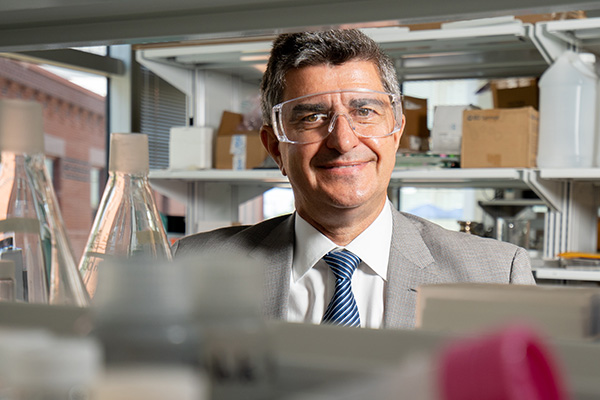
In recognition of his lifetime of research achievement in materials science, Yury Gogotsi, PhD, Distinguished University and Charles T. and Ruth M. Bach Professor, will be awarded the Jan Czochralski Award from the European Materials Research Society (E-MRS).
The award is named for Jan Czochralski, the most cited Polish scientists of all time. He is the creator of the Czochralski method, used for growing single crystals. When applied to germanium and silicon, the method was an important step in producing semiconductor wafers. Nearly all electronics that use semiconductors today still use materials created with the Czochralski method.
Past winners of the Czochralski Award include Walter Heywang, former Director of Research of Siemens; Boris Paton, the longtime President of the Ukraine National Academy of Science; and Shuji Nakamura, professor at the University of California and winner of the 2014 Nobel Prize for Physics.
The award will officially be presented at the E-MRS Fall meeting in Warsaw in September.
Gogotsi is part of a team of scientists at Drexel who in 2011 discovered a new family of two-dimensional (2D) carbides and nitrides called MXenes. The materials have shown remarkable electronic, mechanical, biological and other properties. MXene materials have been put to use in trapping electromagnetic radiation, filtering mercury from water, transmitting radio waves, kidney dialysis and enhancing the flow of electricity. He holds dozens of patents, has published hundreds of peer-reviewed papers and has presented as an expert at countless scientific gatherings related to MXenes. He is consistently ranked among the top 0.1% of cited researchers in multiple fields.
"It was a pleasant and unexpected surprise to be selected for such a prestigious award by the European materials community," Gogotsi said. "It's a great honor, especially since I've known Czochralski's name since my time as a chemical metallurgy student, which he also studied. I worked for many years and received my NSF CAREER award for research on phase transformations in semiconductors produced by Czocharlski method. Also, serendipity played a role in his discovery of single crystal growth, just like in a number of discoveries I was involved with, from hydrothermal carbon formation from carbides to phase transformations in silicon under indenter, to novel conical and polygonised carbon morphologies and, of course, MXenes."